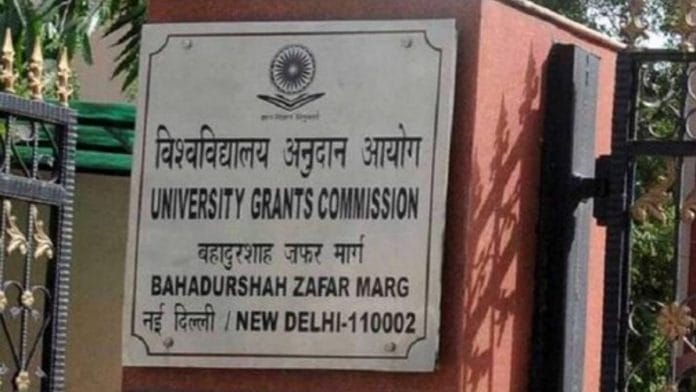New Delhi: The University Grants Commission (UGC) Tuesday released guidelines directing higher education institutions to empanel in-house artists/artisans, termed “kala gurus”, to “enrich learners with immense practical experience combined with creativity and ideas”.
The initiative is meant to bridge the gap between modern education and art and art forms, and to meet the needs of expansion of the higher education system in tune with the National Education Policy 2020.
Explaining the move, the Guidelines for Empanelment of Artists/Artisans In-Residence in Higher Education Institutions state: “This integration is envisioned to have two-tier benefits while providing an opportunity for the students to have first-hand experience with creative talent in various arts and crafts to strengthen and improve programmatic attainments for rich and varied backgrounds and experiences.”
“It will also benefit directly or indirectly, the targeted professionals and art forms in getting new energy and prospects in society. Not only will the students get maximum benefit, but the art forms will also get new dimensions,” the document added.
The art forms mentioned include classical and semi-classical music, handicrafts, dance forms, folk dance, folk theatre, yoga, professional art forms, etc.
A draft of the guidelines, released in March this year, had stated that education in the country was being taught in a mechanical way. Tuesday’s guidelines reiterate the same point.
“It not only lacks emotions and feelings, but also limits co-curricular activities… Even in the field of visual and performing arts, the students are not getting real-time exposure to art and art forms,” the draft document read.
Eligibility criteria for empanelment
According to the guidelines, the “kala gurus” will be provided accommodation on campus but in order to get selected, they will have to fulfil certain criteria.
The essential eligibility criteria are of “participation in five international/national/government recognised/sponsored concerts or at least five international and national exhibitions, art fairs, workshops etc”.
Also, the candidature of kala gurus who come from the traditional family (gharana) of an art form “must be supported by the proof of the fame of the artist’s lineage”.
The “kala gurus” have further been divided into three positions based on seniority and experience. The most experienced artists (no less than 20 years in a particular field) will be designated as ‘Parameshthi Guru’, followed by ‘Param Guru’ (with no less than 10 years of experience in their field of expertise) and ‘Guru’ (at least five years’ experience).
The higher education institutes have been given flexibility to decide the duration of their courses.
The artists will be empanelled by the academic department of institutes, which will have to invite applications and constitute a committee to select the candidate.
The appointed “kala gurus” will be required to hold lectures, demonstrations and workshops and provide practical training.
(Edited by Nida Fatima Siddiqui)
Also read: Modi govt wants colleges, universities to help study AYUSH practices for Covid-19






